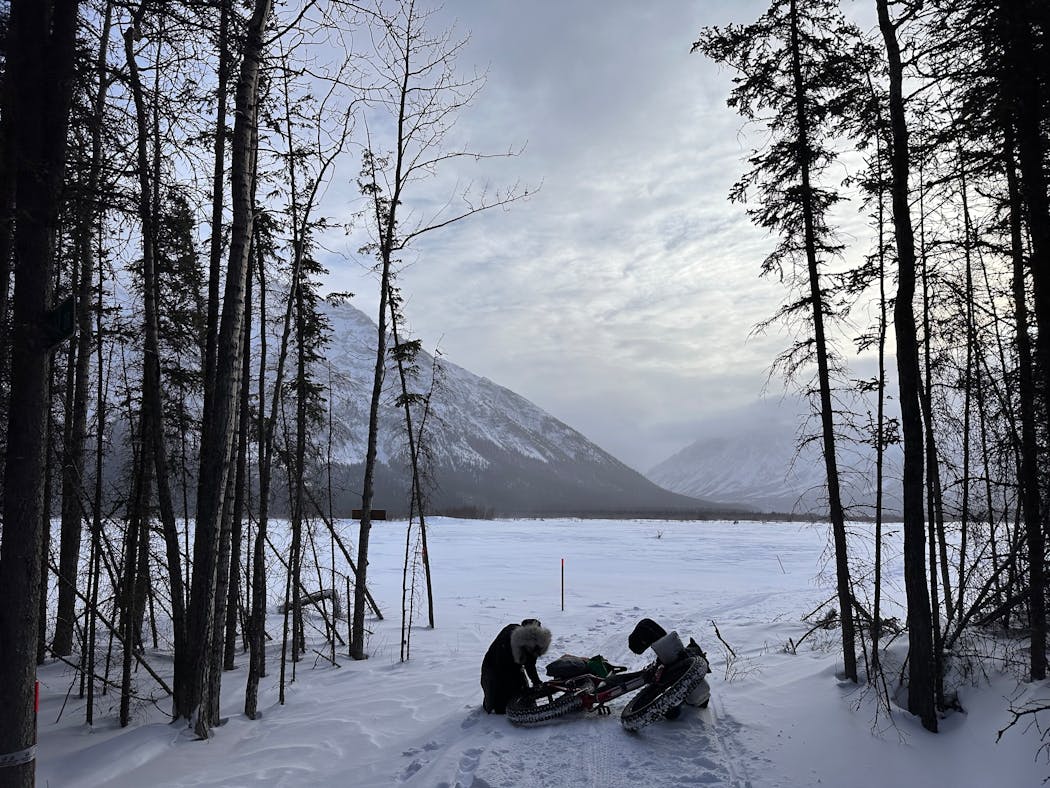Leah Gruhn wasn't just the first woman to finish the Iditarod's human-powered version by bike Sunday. Turns out, she was the only woman.
The Duluth woman navigated 1,000 miles of Alaskan wilderness, 20-below mornings, drenching sleet and enough gales to keep a field of wind turbines humming before she rolled across the frozen Bering Sea to the finish in Nome.
Gruhn, 43, recalled several participants in the Iditarod Trail Invitational (ITI) dropped out after the first night following the start Feb. 26 near Anchorage. Some had frostbite straightaway. One racer became hypothermic in the minus-20 weather and needed airlifting out. There were 34 participants in all, either moving by foot, ski or wheel. Gruhn would finish in 21 days, 2 hours and 48 minutes.
Those riders who went on, like Gruhn, had three more weeks give or take. But the cold, she said, worked in the cyclists' favor, firming up the trail. She also found fuel in the surroundings.
"What was unexpected was the beauty of the southern route," said Gruhn, still in Nome on Tuesday and working her way back to Duluth after her bike shipped out on a cargo plane with others' gear — and even dog teams from the Iditarod Trail Dog Sled Race which began a week after the ITI. The Iditarod toggles between a northern and southern route. The southern is known as topographically more challenging and interesting, with its tussock grasses and wind-scoured plains.
Gruhn over time tied in and rode with four veteran international riders, three Italians and a New Zealander, turning the race into more of an expedition.
"Once our group of five solidified, there was a group mentality that no one was going to be left behind," she said.
They were fortuitous company for Gruhn, who'd ridden the shorter ITI 350-mile race in 2016. She said they game-planned each day, knowing where key shelters were to warm up with a fire or indoor places to sleep. One night they found shelter in a village library. In fact, Gruhn never slept outdoors overnight as she anticipated.
"You're working smarter, not harder," she recalled. "You still were making good progress, but it wasn't a struggle."
Plus she said her collaborators were quick to keep perspective when events seemed dire: Conditions could be worse, they said from experience.
She still was buzzing with adrenaline Tuesday. Rest came hard.
"My body feels great …Yesterday, I thought, I could still be biking. I feel like my body caught up to the effort," she said.
But is Gruhn prepared to re-up for another 1,000-miler?
Perhaps it is too soon to know.
"This was such an amazing experience," she said. "If I came back I'd be worried it wouldn't live up to this expectation. At the same time, I might feel differently in a few months. It exceeded my expectations."
Behind Joe Ryan, Twins stop Rays' streak with 4-2 win

Lynx beat Storm to remain undefeated

Bader briefly sidelined from Twins' lineup after injury from broken bat

Reusse: Bring on the boos, but Gilgeous-Alexander is a deserving MVP



